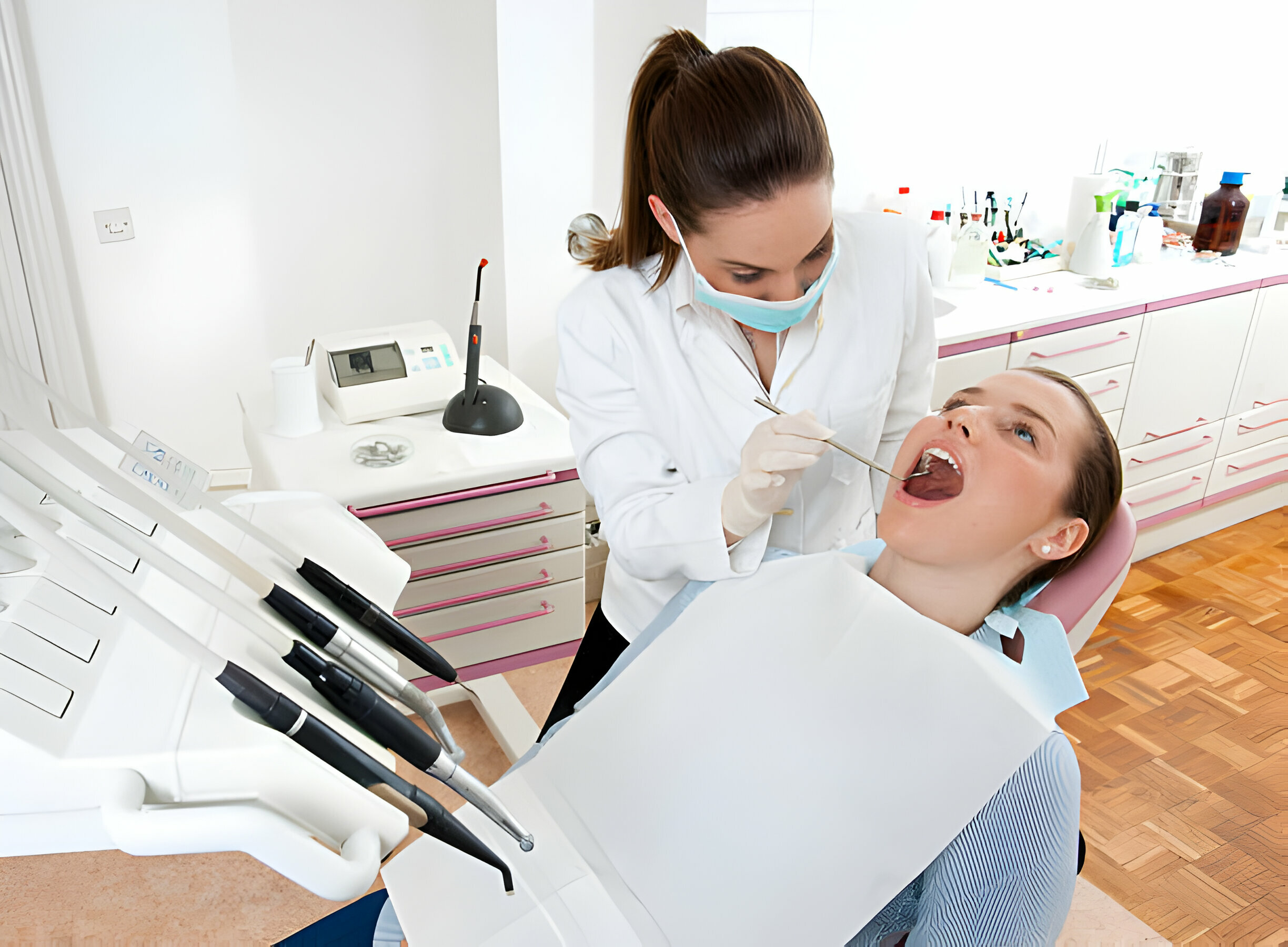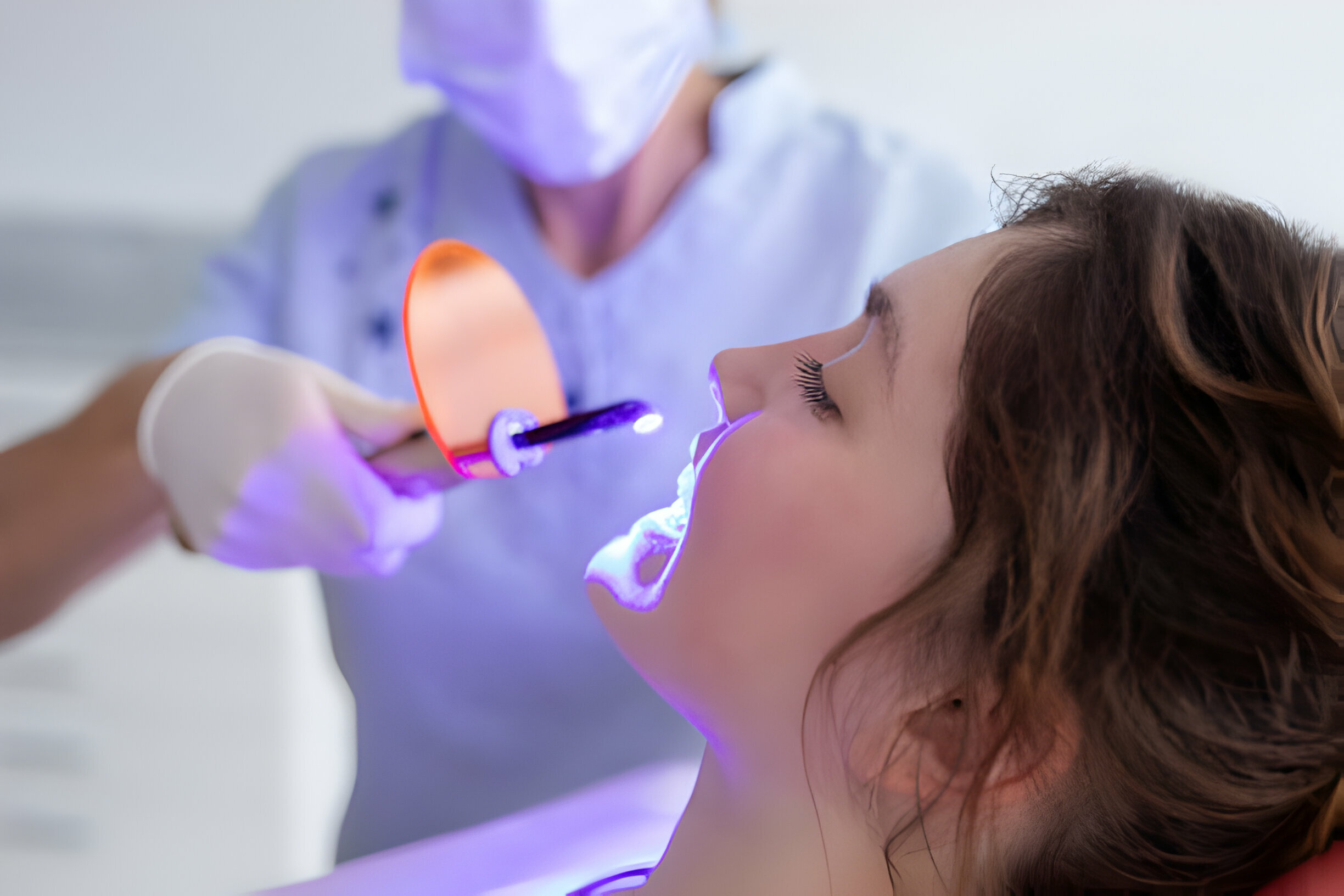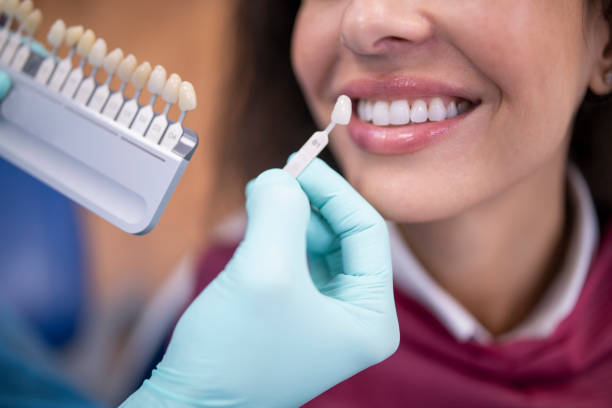Summary:
Having a set of pearly whites goes beyond your oral health! It greatly determines your confidence and adds to your social life.
It is one of the most significant reasons why most individuals are turning towards effective teeth whitening. Over 37 million Americans used different bleaching products to get a dazzling smile.
 But is teeth whitening safe?
But is teeth whitening safe?
Let’s find out as we explore more about the safety and secrets of teeth whitening by understanding:
- What’s the Deal with Teeth Whitening?
- Professional Bleaching – Behind the Scenes
- 7 Effective Tips to Maintain Teeth Whitening
- Does Oral Bleaching Work?
- Side Effects & Considerations for Effective Teeth Whitening
Continue reading as we understand more about the procedure in the following sections.
What’s the Deal with Teeth Whitening?
As the name suggests, teeth whitening revolves around lucrative methods that help you whiten your teeth. Shining your teeth revolves around various clinical, in-house, and DIY treatments (more of which we’ll learn).
However, the concept of bleaching your cavity isn’t always flashy! Given the growing types of alternatives for a dazzling smile, you need to know some critical pointers of the treatment.
- Sparkling Smiles: Oral bleaching is a process that helps your smile achieve a white, pearly tone. It creates the illusion that your enamel is shining.
- Stains, Be Gone: The primary goal of whitening your cavity is to eliminate the stains in your cavity and improve your smile.
- Brighter Confidence: A whiter grin generally leads to more confidence. It might boost your confidence since you feel good about your teeth.
- DIY Power: The market is filled with teeth bleach whitening products like strips, gels, and toothpaste to give you a flashy smile at home.
Professional Bleaching – Behind the Scenes
Your dentist can utilize a variety of procedures to whiten your teeth, both in the office and at home. Generally, they utilize carbamide peroxide to bleach your teeth. It degrades into hydrogen peroxide and urea, which chemically target the tooth’s color. It’s regarded as a safe approach to oral bleaching.
In-office treatment
An in-office whitening procedure might be helpful since it works rapidly. The effect might also endure longer. Whitening your teeth requires an hour of treatment and is generally done in one or two visits.
This is because such products have a higher concentration of hydrogen peroxide than those bought from counters. So, if you have receding gums or abfraction lesions, you should seek in-office therapy.
To speed up the procedure, your dentist in Taylor, Texas, may use light to apply the whitening solution to your teeth. However, this extra strategy has only sometimes been proven helpful.
7 Effective Tips to Maintain Teeth Whitening
1. Diet Changes
While modifying your diet will not cure any existing stains on your teeth, it will prevent future discoloration. Fruits and vegetables are excellent for keeping plaque off your cavity, which helps to prevent future discoloration. Besides, avoid coffee and tea or drink soda or juice through a straw to maintain the shine.
2. Oil Pulling
Oil pulling is a traditional method of improving oral hygiene. You swirl about one tablespoon of oil in your mouth, pushing and tugging it between your cavities. Once done, spit the oil after 15-20 minutes to prevent the oil from clogging your pipes. Oil pulling might help remove plaque and brighten your smile.
3. Baking Soda
Brushing your teeth with baking soda and water paste will help whiten them. It also decreases germs in the mouth, which can lead to additional discoloration. Over time, you can polish superficial stains off your cavity.
4. Apple Cider Vinegar
Apple cider vinegar should only be used a few times weekly since excessive usage might damage tooth enamel. Mix it with water and swirl it in your mouth for a few minutes. Rinse your mouth afterward with water for safe teeth whitening.
 5. Hydrogen Peroxide
5. Hydrogen Peroxide
Use a 1.5-3% solution when using hydrogen peroxide as mouthwash. Using anything more substantial than this may cause discomfort and sensitivity. You may also manufacture toothpaste by mixing hydrogen peroxide and baking soda. Limit usage to a few times each week, and you should notice effects in around six weeks.
6. Preventative Measures
To prevent stains in your cavity, you should avoid a few meals. The major ones include red wine, soda, coffee, black coffee, and dark-colored fruit. While they are enjoyable on occasion, they have an impact on your cavity. You should also avoid smoking and chewing tobacco since it might affect tooth color.
7. Whitening Strips
You may get tooth whitening kits at the drugstore. While these are effective, apply them as instructed. When not applied correctly to your cavity, you may notice that some sections of your cavity are not as white as others, particularly between them.
Does Oral Bleaching Work?
Caring for your smile has become important since we live in a society where appearance is a social asset. This results in oral bleaching products receiving frequent media attention.
But do these products live up to their claims? How frequently should you whiten your teeth?
Here are some factors to consider when purchasing oral bleaching goods.
Common Ingredients
Teeth whitening products frequently contain active chemicals like hydrogen peroxide or carbamide peroxide to bleach teeth. These substances aid in breaking down stains on the surface and aid your smile.
Types of Products
You can achieve oral bleaching using a variety of items, including trays, toothpaste, gels, and strips, among other professional procedures.
Effectiveness
The efficiency of products varies, depending on the type of product used and the severity of the stains.
 Longevity of Results
Longevity of Results
Whitening results are not permanent and might disappear with time owing to variables such as age, diet, and tobacco use.
Safety Considerations
Oral bleaching solutions, particularly those containing high peroxide levels, can cause tooth sensitivity and gum discomfort. Find the safest approach to whiten your cavity. If you are still deciding whether to do it yourself, schedule an appointment with your teeth whitening dentist.
Side Effects & Considerations for Effective Teeth Whitening
While oral bleaching is deemed safe, there may be some adverse effects from treatments.
- Teeth sensitivity: After whitening, your cavity may become more sensitive. You may feel this on your first or second treatment, which may subside with time. Your dentist may offer sodium fluoride gels and potassium nitrate for sensitivity treatment.
- Irritated gums: You may also develop gingival inflammation. This is when your gums are inflamed. It might be caused by the product touching your gums. This adverse effect should subside following your treatments.
While you’re at it, remember that you cannot whiten your cavity permanently. You must regularly seek teeth whitening treatments in Texas for intrinsic and external discoloration.
Keep in mind that these items are designed for natural teeth. If you have implants, dentures, crowns, or bridges, see your dentist about how to match the color of your teeth.
Takeaway
- White teeth are a social asset that improves your smile and confidence.
- The market is filled with options to whiten your cavity in no time. However, you might want to connect with professionals for a better grin.
- Confused about your teeth whitening approach? Visit our cleaning and whitening experts at Taylor Dental And Braces today to help you get the dream grin!


